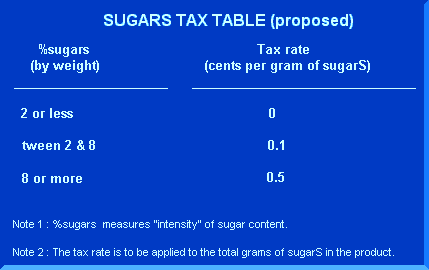
Proposal: an
Added-SugarS Tax
--- like Tobacco Tax
(for health reasons
---
and to help fund
health insurance
for all citizens)
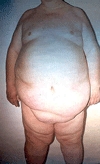

|
Proposal: an
|

|
(2005 Oct blog post)
|
INTRODUCTION : The "epidemic" of obesity and Type 2 diabetes in this country is going to be an increasing drain on the medical systems of this country (such as Medicare and Medicaid). It is well past the time we should have implemented a SUGARS TAX --- to function somewhat like tobacco taxes --- to discourage unhealthy behaviors --- and to help pay for the medical expenses on the adverse results of those behaviors (diabetes, gangrene, kidney failure, cardiovascular problems, etc.). The state governments of these United States have, in the past decade, taken to the courts to get judgments against tobacco companies to partially cover the huge medical costs of emphysema and cancers that are attributable to tobacco. Similarly, it is time to consider a tax on sugar --- actually, on sugarS --- that are added to foods and, perhaps, on sugarS that are naturally in foods --- if it is deemed too difficult to make a distinction between 'added' and 'natural' sugarS in foods. This means sugars like "high fructose corn syrup", "dextrose", "sucrose", "maltodextrin", "cane sugar", honey, fructose, etc. etc. This IS feasible, as described below. NOTE THAT THIS IS A TAX MEANT TO REDUCE OTHER TAXES --- reduce the income taxes necessary to support medical systems like Medicare and Medicaid. Hence, it is a "pre-emptive" tax. And people could AVOID these taxes by avoiding high-sugar food products --- if the tax were setup as proposed below. This tax would be meant to function like tobacco taxes --- to help cover costs of government medical programs. The costs of these programs are being adversely impacted by the ingestion of gross amounts of sugars by citzens. The taxes would make at-risk citizens aware of how pervasive is the presence of sugars in foods --- manufactured foods AND natural foods, such as fruits and vegetables. And the taxes would motivate the availablity of much healthier products. |

|
SUGGESTIONs FOR IMPLEMENTATION It would be pointless to offer merely the suggestion of a sugarS tax. It would be "heat without light". We must consider HOW the sugarS tax would be implemented in a practical way. Rather than trying to tax sugar where it is used --- that is, at all the soft drink and candy and food companies, it is much more practical to tax sugar like tobacco (and gasoline) is taxed. Tax sugar at the cash register --- when it is bought for consumption, at the end of the food chain. Ideally, we would tax these products-to-be-eaten (those that contain significant, measurable sugar) by making the tax proportional to the amount of sugar(s) in the product. This would have the advantage, for example, of motivating soft drink companies to reduce the amount of sugar(s) in "soft drinks" --- and make "low-sugar" drinks more popular. To make products price-comptetive with competitors, food-makers would be motivated to keep the sugarS taxes low by REDUCING the sugar in their products --- such as cakes and pies. Or they would be motivated to introduce new, LOW-SUGAR VERSIONS of their products --- such as low-sugar versions of Twinkies and Snickers bars. Basis of Implementation --- Food Labels : Essentially all 'manufactured' foods have a "NUTRITION FACTS" label. Such labels can provide the basis of a sugarS tax. Ideally, the labels would be required to report 'added' sugarS separate from 'natural' sugarS, such as those in grapes, raisins, and other fruits. Department of Agriculture data could provide the basis for a sugarS tax on 'natural' foods --- if ALL sugarS, not just 'added sugarS' were to be taxed. The following "tax table" suggestion is made almost immediately feasible because food labelling DOES show the number of grams of sugarS in a container. Until the "NUTRITION FACTS" on food labelling includes amounts of EACH KIND of sugar (in grams) --- and until taxes appropriate to each kind of sugar (per gram) are devised, the simplest thing to do is to levy a "sugarS tax by weight, no matter the type of sugar" --- as indicated below, by example. In fact, each food/candy/drink manufacturer could show the tax along with the sugarS information in the 'NUTRITION FACTS' label. The tax would be computed from a simple table like the following, and Congress could review updating the table, every 4 years, say --- in case a change is deemed necessary because of inflation or new food-science developments. At the (rare) times of a change, the manufacturers would make a change to their labels --- just as other changes occur through the years to the NUTRITION FACTS label. Example: the addition of trans-fat grams to the label in 2006. |
A Proposed Sugar-Tax Table:
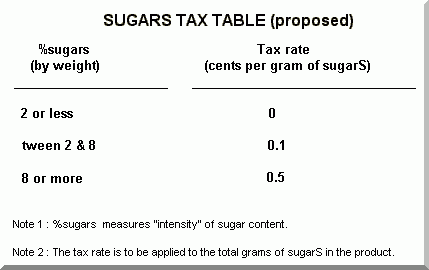
|
A Proposed SugarS Tax Rate Here it is proposed to set the tax rate (per gram of sugarS) according to the PERCENTAGE of sugarS in the product. The calculation of the percentage could be based on the amount of sugarS in either a serving or in the whole container. Either way of reporting is seen in 'NUTRIENT FACTS' of food labelling. One simply divides the weight of the sugarS (in a serving or in the whole product) by the total weight of the serving or weight of the entire food product. The PERCENTAGE ties the tax rate to the "intensity" of the sugar in the product. A lower tax rate is used for low-sugar-intensity products. And a zero tax rate is used when sugar intensity is below a low ("health-safe") threshold. THEN apply the "stepped" tax rate to the TOTAL number of grams of sugarS in the container. Here is a proposed 3-level tax rate table. Level 1) Any product containing 8% or more of sugarS by weight is taxed at the rate of one-half cent (0.5 cents) per gram of sugarS. Level 2) Any product containing less than 8% sugarS but more than 2% sugarS (by weight) is taxed at one-tenth cent (0.1 cents) per gram of sugarS. Level 3) Any product containing less than 2% sugarS is NOT taxed on the sugar content. --- Here are some EXAMPLES to see how it would work on some typical products. EXAMPLE 1 (ketchup) A typical ketchup bottle contains 4 gm of sugarS per 17 gm (1 tablespoon) serving --- and there are 33 servings in the bottle. So the ketchup is 4 gm sugarS / 17 gm serving x 100 = 23.5% sugar. This is in the upper range of the 3-range tax table above, resulting in a tax of 0.5 cents per gram of sugarS. (The name of this particular brand of ketchup is not revealed here, because there are many others with sugar content just as high. In fact, essentially all commercial brands of ketchup are almost one-fourth sugarS.) There are 33 servings x 4 gms-sugarS/serving = 132 gm of sugarS in the entire ketchup bottle. At a tax rate of 0.5 cent/gm of sugarS, the sugarS tax on the bottle of ketchup is 0.5 x 132 = 66 cents. (If there were only 1 gm of sugarS per 17 gm serving, this would be about 5.8% sugarS and the tax rate would be 0.1 cent/gm of sugarS on the 33 servings x 1 gm sugarS/serving = 33 gm of sugarS in the ketchup --- for a sugarS-tax of only 3 cents on the bottle.)
EXAMPLE 2 (soda pop) A 12 ounce (oz) can of a typical soda pop contains 46 gms of sugarS. The can contains ABOUT 12 oz, BY WEIGHT, of pop. There are 28.35 gms per oz of weight, of anything. So there is about 28.35 gm/oz x 12 oz = 340 gm of pop in the can. Thus, the pop is 46 gm sugarS / 340 gm pop x 100 = 13.5% sugarS. According to the hypothetical tax table above, this would yield a tax of 0.5 cent/gm of sugarS. The sugarS tax on the can of pop would be 0.5 cent/gm x 46 gm of sugarS = 23 cents per can. If the amount of sugar in the can were cut in half, the pop would be about 7% sugarS. The tax rate would be 0.1 cent/gm, because this is less than the 8% level of the hypothetical tax table --- and the sugarS Tax on the can of pop would be 0.1 cent/gm sugarS x 23 gm sugarS = 2 cents. EXAMPLE 3 (sugar-y cereal) A fairly typical sugar-y cereal contains 15 gm of sugarS in a 55 gm (2/3 cup) serving. There are 7 servings in the box-container. The sugarS percentage is 15 gm sugarS / 55 gm serving x 100 = 27%. According to the hypothetical sugar-tax table above, since the sugars content is greater than 8%, the sugarS tax is 0.5 cents/gm. The box contains about 15 gm sugarS/serving x 7 servings = 105 gm of sugarS. The sugarS tax on the box would be 0.5 cents/gm x 105 gm = 52 cents. This is rounded DOWN from 52.5 cents, giving consideration to the normal variations in weight of cereal and sugarS in the box. If the cereal contained ONLY 4 gm of sugarS per 55 gm serving, the %-sugarS would be less than 8% and the tax rate would be 0.1 cent/gm of sugarS. The amount of sugarS in the box would be 7 servings x 4 gm/serving = 28 gm sugarS. Thus the sugarS-tax on the box of cereal would be 0.1 cent/gm sugarS x 28 gm sugarS = 3 cents. EXAMPLE 4 (low sugar cereal) A whole-grain cereal (whose ingredients are simply whole wheat kernels, whole flaxseed, salt, barley malt, and a few vitamins) contains "less than 1 gm" of sugarS in a 55 gm (3/4 cup) serving. The sugarS-percentage is LESS THAN 1/55 x 100 = 1.8%. According to the hypothetical sugar-tax table above, since the sugars content is less than 2%, there would be no sugarS-tax on this product (which, by the way, is really a product --- "Uncle Sam Cereal"). Note that one could make a 'safer-for-your-health' cereal by mixing the cereals in examples 3 and 4 --- and, at the same time, you would reduce the sugar-taxes per gram of cereal. This mixing of cereals is worth considering for the health of children, who are bombarded with ads for very-high-sugar cereal. This way they could have their high-sugar-cereal while cutting down the amount of sugar. If the sugarS content of the low-sugar-cereal were a little higher, at 2 gm per 55 gm serving, the sugarS-percentage would be 3.6%. The hypothetical tax rate would be 0.1 cent/gm of sugarS. There are 5 servings per box. Thus there are 5 servings x 2 gm sugarS/serving = 10 gm of sugarS in the box. The sugarS tax would be 0.1 cent/gm x 10 gm = 1 cent on the box of still-relatively-low-sugar cereal. END OF EXAMPLES. |

|
An Alternative Tax Table If you think that the tax calculations should be simplified, one way would be to establish a two-level tax table, instead of three-level. Example:
Level 1) zero cents for less than 2 percent sugarS. The zero-cents-level would be needed, at the very least, to handle products that have unavoidable trace amounts of sugar. A disadvantage of the 2-level versus the 3-level tax is that it is more difficult to motivate the reduction of "gross" amounts of sugar in products --- like cakes, pies, canned fruit, ketchup, soda pop, etc. |
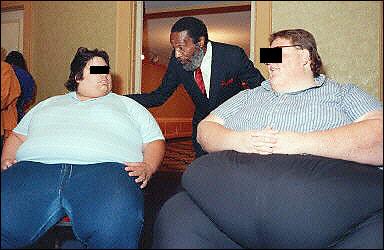
|
A NOTE ON PERCENT-SUGARS Have you ever noticed that in the "NUTRITION FACTS" labelling on food containers, there is NO "% of RDA" (RDA = Recommended Daily Amount) or "% of Daily Value" listed for sugars, like there is listed for other ingredients. This is because there is no established Daily Value for sugars. The reason is the same as the reason that health books (and some medical books) say that sugar calories are "empty calories". That is, there are no nutrients --- no vitamins, minerals, co-factors, proteins --- in sugarS. But there IS a percentage that could --- and SHOULD --- be shown for sugarS. From what we see in the examples above (24% sugarS in ketchup!), it would appear helpful for 'NUTRITION FACTS' labels to show the %-sugarS in a product (by weight) --- to give an immediate idea of the "intensity" of the sugar(s) in the product. In our examples above, we would see
****** SUMMARY PERCENTS ************************
If a sugarS tax were approved, the publication of the tax in the 'NUTRITION FACTS' label would serve as a measure of the "intensity" AND the quantity of the sugar in the product. That would be an alternative to showing the %-sugarS number in the label. I would favor putting the %-sugarS number on the label, because that would clearly let the consumer know the "intensity" of the sugar in the product. They would not have to do the calculation in their head or on a calculator --- to figure out the percent of sugarS in the product. It would be instructive to calculate the sugarS-percentages for typical cakes, pies, cookies, hard-candies, chocolates, raisins, dried apricots, fruits, carrots, beets, etc. --- i.e. extend the 'SUMMARY PERCENTS' table above --- beyond catsup, cokes, and cereal. I am pressed for time to devote to this piece, otherwise I would do that. I will put it on my blog-to-do list, which is already quite long. For now, I leave it as an exercise for the reader. I have some preliminary tables of food content here. Or ... you can go to the sources that I used. A good source for "Nutrition Facts", other than actual package labels, is (was?) the web site www.nutritiondata.com. Use the "Food Search" button at the top of each page. A major part of that data is based, in turn, on U.S. Department of Agriculture ARS (Agricultural Research Service) data at www.ars.usda.gov. There is data that includes detail data on mineral, vitamin, fatty acid, and (essential) amino acid content. Also, it would be instructive for you to add up the sugarS that you ingest on typical days or on 'bad food days' (in tax-DOLLARS, like above --- if that will make it more meaningful than total-grams of sugars). This would be similar to the fact that many health books urge you to add up the number of CALORIES (a measure of heat, not weight) that you eat on such days. |
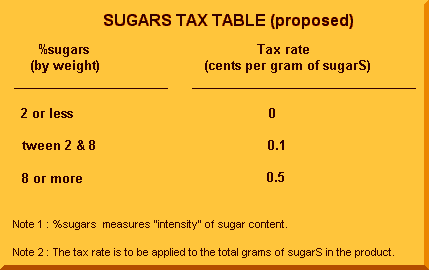
|
CONCLUSION: Is anyone ready to ask their congressmen to support a sugarS tax like this?? Mothers who love their children: You should. Is anyone ready to ask a president --- one who should be interested in the strength-and-health of the citizenry, over the various rewards offered by sugar/processed-foods/candy lobbyists --- to support this ??? (I don't expect Republicans or other politicians getting 'rewards' from the sugar/candy/sugar-water/processed-foods/drug industries to respond in a health-patriotic way.) A sugarS tax would be 'the right thing to do'. As indicated above, it would certainly eliminate a lot of Medicare and Medicaid expenditures by eliminating a lot drugs and surgery being used on the obese and diabetic. Maybe we would have more people dying in their sleep from 'natural causes' (without a lot of expenditures on drugs and surgeries), rather than heart attacks after multiple heart bypass operations and diabetics dying, after multiple amputations, as organs like kidneys fail or as vessels rupture. --- Of course, the RATES of 0.5 cent/gm and 0.1 cent/gm of sugarS would almost certainly be topics of intense debate --- especially from food manufacturers --- if they could ever be taken to the point of having a sugarS tax applied to their products. The manufacturers, except perhaps healthy-food manufacturers, would most likely argue for setting those rates lower. Also, the PERCENTAGES used to set the several tax levels would be subject to debate. And the number of tax-LEVELS would be subject to debate. But the specific figures here, give a starting point for consideration --- and they seem to be "in the ballpark". |

|
SOME SUGAR HISTORY There is quite a history of attempts to tax sugar in the U.S. --- back in revolutionary war times, by England, and in the 1920's and 1930's. In fact, in one account I read, the American Revolution was said to be triggered more by a tax on sugar/molasses (used to make rum/liquor) than by a tax on tea. So, if a tax on sugar or sugar-products was so unpopular with rum-makers, it is not likely to be popular with influential food-candy-drink-liquor makers of today. Perhaps our history books say the Revolution was triggered by a tea tax rather than a molasses/rum tax because it sounds better!? It wouldn't be good to think that the American Revolution was started by a bunch of drunks. What do you think is more likely --- Americans were angered by a tax on tea --- or angered by a tax on rum or rum-makings? Which scenario would you bet money on? There is some very interesting U.S. sugar history in the book titled "Sugar Blues" by William Dufty, available in paperback for less than $7. Dufty was a reporter who became interested in the detrimental effects of sugar via a meeting with the actress Gloria Swanson, who later became his wife. Gloria Swanson testified before Congress, on sugar. Swanson considered it to be a poison and would not touch the stuff. Unfortunately for the strength and health of this country, the sugar lobbyists have much more "clout" than a Swanson or a Dufty. Ironically, Gloria Swanson was a staunch Republican. She was apparently naive enough to think that she could convince a bunch of Republicans to impose a tax on sugarS. I think Swanson and Dufty would have been in favor of a sugarS tax structured like this --- to motivate the right behaviors. The hard part would be getting it past the federal legislators who have their hands in the pockets of the lobbyists. There are too many of those kinds of 'anything for a buck' legislators. FOR MORE INFO : To get some more info on this subject of sugars and taxes and the U.S. government, you can try WEB SEARCHES on keywords such as: |

|

|

|

|
Bottom of this page on blog topic
To return to a previously visited web page location, click on the
Back button of your web browser, a sufficient number of times.
OR, use the History-list option of your web browser.
< Go to Top of Page, above. >Or you can scroll up, to the top of this page. Page history
Page was posted in Oct 2005.
|
